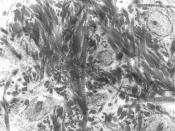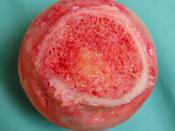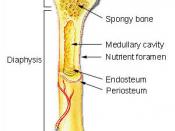Introduction
The following study provides an overview of what is know concerning cortical bone. We explore its physical composition, methodologies used in mechanical investigations, and implication of findings to date.
History of the Study of Bone
The first documented study of bone was by Hippocrates, considered to be the father of medicine. Since his initial investigation into anatomy, several other notable scientists have played a part in bone anatomy including Aristotle, Galen, Abdallatif, Havers, and Albinus. In Great Britain in the 19th century only the bodies of murderers were handed over to anatomists to dissect. However, once the utter importance of understanding human anatomy for surgeons was realized large-scale exhumation or "body-snatching" became common practice. In other countries those who could not afford to pay for burial or were in prison were donated to science. (Wikipedia)
Once the anatomy of bone was no longer a mystery, researchers turned their attention to the mechanics of bone.
Several methods of testing and modeling bone were developed. Much focus has been on bone remodeling and repair. In the past decade alone great strides have been taken. The mechanical understanding of bone has grown to a level where replacements, prosthetics, fractures, unusual loading patterns, and manufacturing of bone are within the realm of the possible.
The Structure of a Bone
Several factors play an important role in the mechanical properties of bone. Of these, bone anatomy and physiology lay the foundation for the function and properties. The typical structure of bone can be examined with the example of long bone. As seen in Figure 1, the femur is a long, hollow shaft that is capped at both ends by rounded structures. The shaft is called the diaphysis, and the rounded regions are the epiphyses. Connective segments between the diaphysis and the epiphyses, called the...


